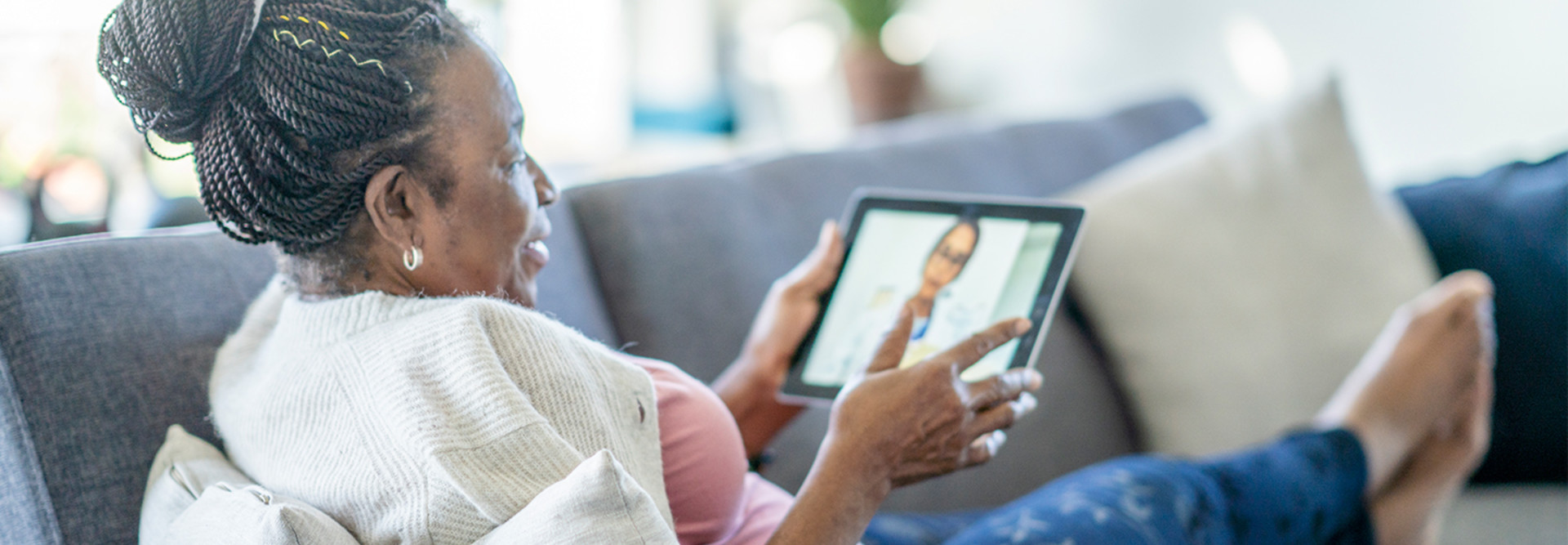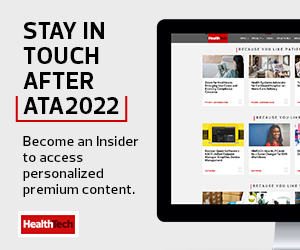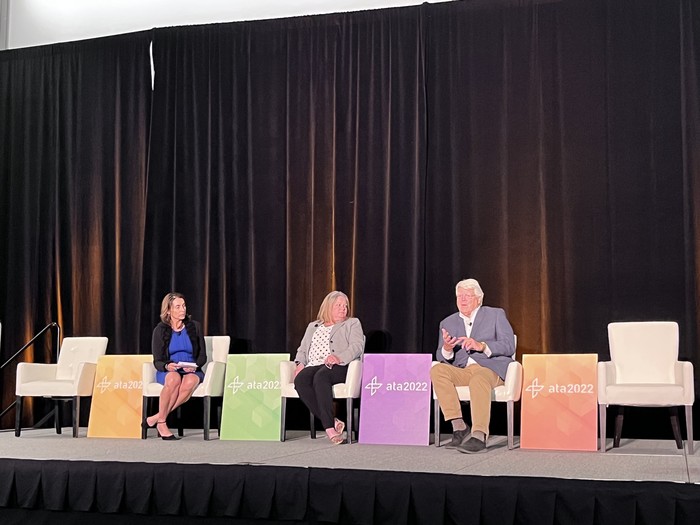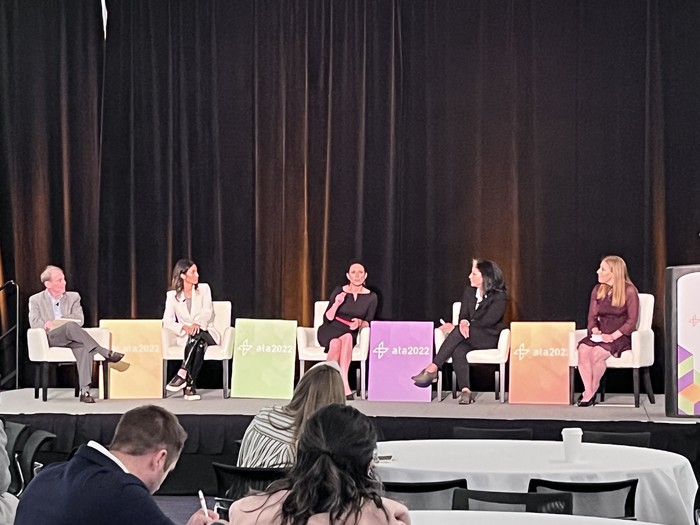Tania Malik, Co-Founder of Virtual Medical Services; Marlene McDermott, Vice President of Therapy Services at Array Behavioral Care; and Peter Yellowlees, Professor of Psychiatry and Chief Wellness Officer at UC Davis Health discuss tips for mitigating clinician burnout during an ATA2022 session.
To help support clinicians, UC Davis Health developed a peer responder system that trained 600 nurses, doctors, pharmacists and other staff to be peer responders. Yellowlees said the responders are identified on their buddy badges and are trained to listen and offer to support to those who need it. They can also escalate a response if needed.
Another way to mitigate clinician burnout is to reduce the documentation burden and the amount of emails physicians have to read and respond to. UC Davis Health has employed people to triage inboxes and also reduced the number of administrative emails.
To help with the documentation burden, McDermott suggested implementing technology that allows for concurrent documentation. Clinicians can remain in a session while documenting the encounter.
DISCOVER: Learn how partner-delivered IT services help mitigate the effects of staff shortages.
“Patient and staff experience and engagement need to be part of an organization’s strategic planning. It’s important to consider staff at the same level as the patient,” said Yellowlees. “We should be patient-centered, but we also want to be staff-centric.”
He recommended organizations set up a way to let any staff member directly submit ideas or feedback. A method for responding and following up on submissions also needs to be implemented so it’s clear to clinicians that leadership is listening to them.
Tips to Improve the Patient Experience with Telehealth
Ensuring patients have a good experience with telehealth and virtual care is key to its long-term success. In the session “The Telehealth Experience: What Is It Actually Like on the Other End?”, panelists discussed how to build more inclusive, accessible and equitable telehealth programs.
Dr. Lisa Levine, strategic adviser for the MAVEN Project, explained that it’s important to communicate with patients prior to an appointment so they know what vitals they need to check. If they don’t have that information ready for the appointment, then a diagnosis could be missed or they might need to schedule a second appointment.
“People sometimes can’t afford a scale to measure their weight before an appointment. If a clinician needs a patient’s weight, they should give them time to get that metric from somewhere that has a scale,” she said. “It sounds basic, but in every experience, I’ve been almost embarrassed at how unprepared I was for an appointment, and all I do is telehealth. I’m busy, and I didn’t get any reminders. If it’s happening to me, it’s happening to a lot of folks.”













